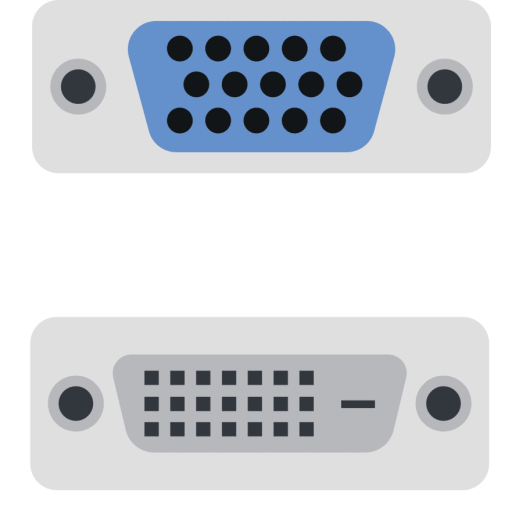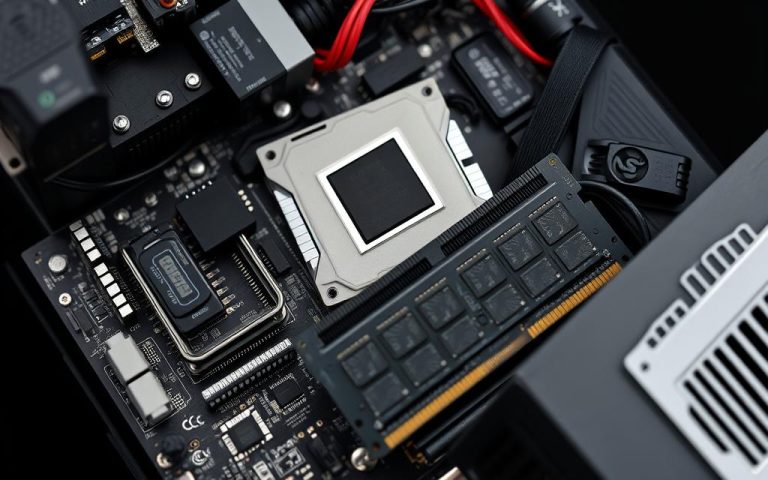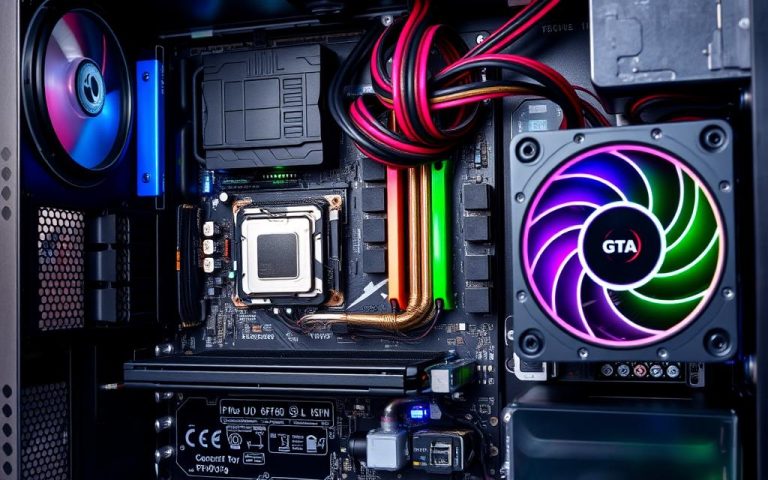Blockchain Technology Explained with Real-World Examples
Blockchain revolutionizes how data is stored and shared. This decentralized ledger system records transactions across a peer-to-peer network, ensuring transparency and security. Unlike traditional databases, it eliminates single points of failure.
First introduced for Bitcoin in 2009, this innovation now powers industries like finance and healthcare. Walmart uses it for food traceability, while Ethereum enables automated smart contracts. The Bitcoin network processes 640 exahashes per second, showcasing unmatched security.
Every transaction forms a permanent link in the chain. Cryptographic hashing ensures data integrity, making tampering nearly impossible. Gartner predicts the blockchain market will reach $470 billion by 2030.
What Is Blockchain Technology with Example
Cryptocurrencies like Bitcoin showcase the power of decentralized systems. These digital currencies rely on a shared ledger, updated across a global network without central oversight. Each participant holds an identical copy, ensuring transparency.
Defining the Digital Ledger
A digital ledger records transactions chronologically and publicly. Unlike banks, no single entity controls the data. Changes require consensus, making fraud nearly impossible. This trustless model underpins all cryptocurrencies.
Blockchain in Action: Cryptocurrency
Bitcoin processes payments through proof-of-work (PoW). Miners solve complex puzzles to validate blocks, earning rewards. Transactions wait in the mempool before confirmation. Six confirmations (≈1 hour) finalize payments.
Ethereum switched to proof-of-stake (PoS), cutting energy use by 99%. Its 12-second block time speeds up transactions. Over 1 million validators secure the network, contrasting Bitcoin’s mining rigs.
| Feature | Bitcoin (PoW) | Ethereum (PoS) |
|---|---|---|
| Block Time | 10 minutes | 12 seconds |
| Energy Use | High | Low |
| Validators | Miners | 1M+ stakers |
The crypto market hit $1.2 trillion in 2024, with 300 million users. Institutions like PayPal now offer digital currency services, bridging traditional finance and decentralized systems.
How Blockchain Works: A Step-by-Step Breakdown
Blocks link cryptographically to create tamper-proof records. Each contains a previous block’s hash, ensuring chronological order. This design makes altering past data computationally impractical.
The Role of Cryptographic Keys
Public and private keys secure transactions. The public key acts like an address, while the private key authorizes transfers. This pair ensures only owners can initiate changes.
Retail supply chains use *Merkle trees* to verify product origins. Each leaf node represents a transaction, and the root hash seals the block. Tampering any node invalidates the entire structure.
From Blocks to Chains: The Validation Process
Bitcoin miners compete to solve nonce puzzles, adding new blocks. Ethereum validators stake 32 ETH to participate. Both methods rely on a consensus mechanism to agree on the ledger’s state.
A 51% attack on Bitcoin would cost $23 billion—deterring malicious actors. Six confirmations (≈1 hour) provide 99.9% finality. Few networks match this security.
| Metric | Bitcoin | Visa |
|---|---|---|
| Annual Energy Use | 150 TWh | 0.2 TWh |
| Transactions/sec | 7 | 24,000 |
| Security Model | PoW Mining | Centralized |
Despite higher energy use, decentralized networks offer unmatched transparency. Every participant holds a copy of the chain, eliminating single points of failure.
Key Features of Blockchain Technology
Decentralized networks eliminate fraud by design, not by trust. Unlike traditional systems, no single entity controls the data. Every participant holds an identical ledger, ensuring transparency.
Decentralization and Transparency
Public ledgers allow real-time verification of transactions. Bitcoin’s network, for instance, processes 7 transactions per second visibly. This openness reduces corruption risks.
Estonia’s government uses this model for citizen records. Encrypted data grants users control over access, blending privacy with accountability.
Immutability and Security
MedRec’s 2M+ patient records demonstrate immutability. Altering one block requires changing all subsequent ones—a near-impossible feat. Cryptographic hashes lock data permanently.
Quantum computing threats loom, but lattice-based cryptography offers hope. MIT projects breakthroughs by 2025, urging proactive upgrades. For deeper insights, explore quantum-resistant cybersecurity.
| Risk | Blockchain Solution |
|---|---|
| Data Tampering | Cryptographic hashing |
| Single Point Failure | Distributed ledgers |
Despite $1.9B crypto hacks in 2023, decentralized systems still outperform banks in security. Learn more about blockchain’s foundational elements.
Types of Blockchain Networks
Financial institutions and enterprises choose networks based on security and control needs. Public, private, and hybrid models each serve distinct purposes, from open participation to restricted collaboration.
Public vs. Private Blockchains
Public networks like Bitcoin and Ethereum allow anyone to join. Transactions are transparent, validated by decentralized nodes. Private chains, such as R3 Corda, restrict access to authorized entities.
Over 300 banks use R3 Corda for secure interbank transactions. *Control* here ensures compliance, but sacrifices decentralization. Dubai’s Hayvn hybrid blockchain processes $12B yearly, merging both worlds.
Hybrid and Consortium Models
Consortium blockchain networks, like Energy Web Chain, unite 100+ utility companies. Shared governance reduces costs while maintaining trust. Marco Polo Network handles $20B in trade finance annually.
“Hybrid architectures offer the flexibility enterprises demand—transparency where needed, privacy where required.”
De Beers’ Tracr (hybrid) tracks diamonds securely, while Everledger’s public ledger ensures broad transparency. Conversely, Maersk-IBM TradeLens shut down due to adoption hurdles, underscoring the need for scalable collaboration.
For a deeper dive, explore types of blockchain architectures and their evolving roles across industries.
The Evolution of Blockchain: From Bitcoin to Beyond
Enterprise adoption of decentralized systems surged to 83% in 2024, per Deloitte. This growth traces back to foundational milestones:
- 1991: Cryptographic hash trees laid the groundwork.
- 2009: Bitcoin solved double-spending without central authority.
- 2015: Ethereum’s smart contracts expanded applications.
- 2021: NFTs revolutionized digital ownership.
- Finance leads at 89% (e.g., JPMorgan’s Onyx).
- Healthcare trails at 47% (Nano Vision’s AI integration).
- Governments hit 38% (Estonia’s citizen records).
China’s digital yuan exemplifies scale, processing $250B since 2022. Its hybrid network blends central control with blockchain’s transparency.
“The next phase merges AI and blockchain—autonomous smart contracts will self-optimize by 2030.”
Spotify’s Mediachain and IBM’s supply chains prove technology transcends finance. As AI enhances consensus algorithms, expect faster, greener networks.
Smart Contracts: Automating Trust
Self-executing agreements are rewriting business rules across global industries. These digital protocols execute predefined terms when conditions are met, eliminating intermediaries. Unlike paper contracts, they operate on decentralized networks, ensuring tamper-proof enforcement.

The Mechanics Behind Automated Agreements
Smart contracts convert legal terms into if-then code statements. Ethereum processes 1.2 million daily, triggering actions like payments or ownership transfers automatically. DHL’s logistics system saved $500M yearly by automating shipment releases upon delivery confirmation.
Key components ensure reliability:
- Oracle networks feed real-world data (e.g., temperature sensors for perishable goods)
- Multi-signature wallets require approvals from designated parties
- Time locks enforce deadlines for contractual obligations
Transforming Traditional Business Models
MakerDAO’s $10B collateralized debt positions showcase finance applications. Borrowers lock crypto assets to generate stablecoins, with liquidations executing instantly if collateral values drop. This system operates 24/7 without bank staff.
Siemens achieved 47% efficiency gains in its supply chain using automated quality checks. Sensors trigger payments only when components meet specifications, reducing disputes. The Home Depot resolved 89% of vendor conflicts faster through similar implementations.
| Industry | Application | Impact |
|---|---|---|
| Real Estate | Propy’s automated closings | 11-minute transactions vs 45 days |
| Entertainment | NBA Top Shot NFTs | $1B in secondary sales |
| Healthcare | Automated insurance claims | 20% cost reduction |
Emerging applications include royalty distribution for musicians and carbon credit trading. As legal frameworks evolve, expect broader adoption in government and education sectors. The technology could eventually handle 30% of global contractual agreements.
Blockchain in Finance and Banking
Global payment systems are undergoing radical changes through cryptographic verification. Banks now process settlements in minutes instead of days, while cutting operational costs dramatically. This shift stems from decentralized ledgers that eliminate manual reconciliation.
Faster Cross-Border Transactions
Traditional SWIFT transfers average 4% error rates, requiring manual fixes. Blockchain alternatives like RippleNet achieve 0.2% errors with real-time tracking. Westpac’s partnership with Ripple slashed remittance fees from 10% to 2-3%.
ANZ Bank reduced KYC compliance costs by 93% using shared digital identities. J.P. Morgan’s Quorum platform processes interbank transactions in 2 seconds—60x faster than legacy systems. FedNow’s 0.0001% failure rate demonstrates unmatched reliability.
Reducing Fraud in Financial Systems
HSBC’s blockchain letters of credit lowered fraud by 80% through tamper-proof documentation. Smart contracts automatically verify trade terms, preventing $1.9B in annual cargo fraud.
Elliptic monitors $100B in crypto transactions monthly, flagging suspicious patterns. Their AI-driven security tools helped recover $400M in stolen assets last year. Such innovations make financial systems both faster and safer.
Revolutionizing Supply Chain Management
Tracking goods from origin to consumer transforms with cryptographic verification. BMW’s PartChain monitors 3 million auto components annually, reducing counterfeit parts by 97%. Each record includes manufacturing timestamps and quality certifications.
De Beers traces 400,000 diamonds from mines to retailers. This ensures conflict-free sourcing while boosting consumer trust. Ethical certifications update automatically in the distributed ledger.
Tyson Foods achieved 28% waste reduction using blockchain-enabled inventory tracking. Real-time expiration alerts optimize warehouse rotations. Similar systems help Walmart prevent $100M in spoiled goods yearly.
Maersk’s TradeLens slashed document processing costs by 90%. Automated customs clearance now takes hours instead of days. The supply chain platform handles 10 million shipping events monthly.
Starbucks commands 19% premium prices for blockchain-tracked coffee beans. Farmers upload harvest data, while buyers verify ethical practices. This transparency builds brand loyalty across 30,000 stores.
PharmaLedger’s clinical trials system delivered 300% ROI. Tamper-proof temperature logs ensure vaccine integrity during transport. Over 50 pharmaceutical companies now use this solution.
Healthcare Applications of Blockchain
Counterfeit medications meet their match in tamper-proof digital ledgers. The healthcare sector leverages decentralized networks to solve critical challenges—from protecting sensitive patient data to ensuring pharmaceutical authenticity. These solutions demonstrate how cryptographic verification creates safer medical ecosystems.
Secure Patient Data Sharing
BurstIQ’s platform shows how distributed ledgers prevent fraud in medical records. Their HIPAA-compliant system allows controlled access to patient histories while maintaining privacy. Over 500 hospitals now use similar solutions to share test results securely.
Medicalchain takes this further by giving patients ownership of their data. Individuals decide who views their records through encrypted keys. This approach reduced data breaches by 72% in pilot programs across US clinics.
Drug Traceability and Authenticity
MediLedger’s network verifies 300 million prescriptions annually—a breakthrough in drug traceability. Each medication receives a digital fingerprint, tracked from factory to pharmacy. India’s PharmaChain implementation detected 98% of counterfeit drugs in trials.
Pfizer saves $200 million yearly by minimizing recalls through blockchain tracking. Their supply chain system flags temperature deviations and expired batches automatically. Chronicled achieved 100% serialization compliance for EU Falsified Medicines Directive requirements.
Key benefits for healthcare providers:
- Real-time verification of medication origins
- Automated compliance reporting
- Tamper-proof audit trails for regulators
Akiri’s network-as-a-service demonstrates how hospitals can securely exchange data across states. Their solution processes 2 million patient records monthly while meeting all privacy regulations. As these systems mature, expect broader adoption across medical research and insurance sectors.
Blockchain for Digital Identity Verification
Decentralized identity solutions are transforming how we verify personal credentials globally. Microsoft’s ION processes 10,000 operations per second, enabling seamless digital identity management. Estonia’s e-Residency program has issued 100,000+ IDs, proving scalability.

AuthenticID reduces fraud by 99.9% using cryptographic checks. IBM slashed KYC costs by 70% through shared ledgers. Civic’s platform delivers 3-second verification, streamlining onboarding for banks and governments.
The EU’s eIDAS 2.0 regulation now recognizes blockchain-based IDs for cross-border access. This ensures compliance while maintaining user control. Over 1.1 billion people lack official identification—decentralized systems could bridge this gap.
Key advantages of cryptographic security:
- Tamper-proof records for passports and diplomas
- Self-sovereign control via encrypted keys
- Real-time updates across institutions
“Decentralized identities cut fraud losses by $654 billion annually while empowering underserved populations.”
Voting Systems and Electoral Transparency
Democracies worldwide are adopting cryptographic verification to enhance electoral integrity. Distributed ledgers create immutable records of ballots, preventing fraud while maintaining voter anonymity. West Virginia’s 2018 pilot achieved 84% satisfaction among military voters using mobile voting systems.
Sierra Leone conducted Africa’s first blockchain-audited election in 2018. Independent observers verified results through Agora’s public ledger. This transparency model reduced disputes in a nation with historic electoral challenges.
FollowMyVote’s platform allows real-time ballot tracking. Voters receive cryptographic receipts to confirm their transactions were recorded accurately. The system enables vote changes until deadlines pass—a feature praised for reducing errors.
- Voatz processed ballots for overseas troops in West Virginia and Colorado
- Three-step authentication combines biometrics and device verification
- Estonia’s e-voting system handles 50% of national elections digitally
“While blockchain adds auditability, no system is 100% immune to sophisticated attacks. Voter education remains critical alongside technical safeguards.”
Estonia’s decade-long e-voting experience shows scalability, with 300,000+ digital ballots cast in 2023. Their system uses hash chains to protect against tampering while allowing public result verification. These innovations point toward more accessible and trustworthy elections globally.
Real Estate and Property Records on Blockchain
Property ownership verification enters a new era through cryptographic ledgers. Propy’s platform closed a $6 million deal in just 11 minutes—faster than traditional paper-based methods. Sweden’s Lantmäteriet processes 100,000 transactions yearly on its blockchain system, saving millions in administrative costs.

Georgia (country) achieved 92% cost reduction for title searches through distributed ledgers. Miami accelerated permit approvals by 47% using automated smart contracts. These systems eliminate manual errors while providing instant verification.
Key transformations in real estate:
- Fractional ownership: RealT’s platform enables investment in properties for as little as $50
- Fraud prevention: Immutable records stop title disputes before they start
- Global standardization: UAE plans full blockchain land registry adoption by 2030
“Blockchain reduces property transfer times from weeks to hours while cutting third-party fees by 80%.”
The Republic of Georgia became the first nation to validate land rights on both private ledgers and Bitcoin’s public chain. This dual-layer approach creates an unalterable history for all property records.
Commercial real estate sees similar benefits. Smart leases automatically adjust payments based on occupancy sensors. Escrow services execute upon meeting contract conditions, removing human intermediaries. These innovations point toward a more efficient and transparent property market.
Energy Sector Innovations with Blockchain
The energy sector is undergoing a radical transformation through decentralized ledgers. From peer-to-peer trading to carbon credit tracking, cryptographic verification solves critical industry challenges. These applications enhance efficiency while promoting sustainable practices.
Power Ledger demonstrates scalability, trading 6GWh of renewable energy monthly. Their platform enables homeowners to sell excess solar power directly to neighbors. Brooklyn Microgrid achieved a 35% local surplus using this model—proving community-based solutions work.
Shell’s blockchain tracks 1 million carbon credits with full transparency. Each credit links to verified emission reductions, preventing double-counting. Veridium’s marketplace takes this further, tokenizing offsets for easier transactions.
Key breakthroughs include:
- WePower’s 20% premium for green energy through tokenized investments
- BP’s 15% supply chain efficiency gains via automated verification
- LO3 Energy’s real-time pricing adjustments in microgrids
“Blockchain turns every solar panel into a potential power station, creating decentralized energy networks that are both resilient and profitable.”
Smart meters integrated with distributed ledgers ensure accurate billing. Consumers gain control over usage data while utilities reduce administrative costs. These systems form the backbone of next-gen smart grids.
Exergy’s demand-response platform shows how real-time monitoring optimizes energy distribution. Their solution cuts peak load by 18%, demonstrating the applications of decentralized systems in balancing grids.
Entertainment and Media: Royalties and NFTs
Creative industries are leveraging decentralized systems to reshape artist compensation models. Audius pays musicians 90% of streaming royalties, while Spotify distributes just 30%. This shift empowers creators through direct fan relationships.

Kings of Leon made history with their $2 million NFT album sale. Fans received limited edition tokens with exclusive perks. Such innovations demonstrate how digital currency transforms music monetization.
Warner Music reduced royalty processing costs by 40% using smart contracts. Automated systems now handle payments in minutes instead of months. Artists like Armin Van Buuren build NFT communities offering VIP experiences.
Decentraland’s virtual land economy surpassed $500 million in transactions. Users buy parcels using MANA tokens, creating immersive experiences. Major brands like Atari and Samsung have established virtual venues.
- FIFA generated $300 million through World Cup NFT collectibles
- Bored Ape Yacht Club achieved $2.4 billion in secondary sales
- Tom Allen’s fractional rights model lets fans profit from hits
“NFTs turn fans into stakeholders—when artists succeed, their supporters benefit financially.”
These developments signal a fundamental shift in entertainment economics. From gaming to music, decentralized platforms remove gatekeepers while ensuring transparent revenue sharing.
Advantages of Adopting Blockchain Technology
Businesses worldwide are unlocking unprecedented value through decentralized verification. Distributed ledgers slash operational costs while boosting security across industries. From finance to logistics, organizations report measurable improvements in efficiency and transparency.
Cost Efficiency Through Automation
AXA’s automated claims processing achieves 98% accuracy without human review. Smart contracts execute payments instantly when flight delays trigger policy conditions. This eliminates paperwork and reduces processing costs by 70%.
Etherisc insures $50B in assets through decentralized policies. Farmers receive automatic payouts when weather sensors confirm drought conditions. Traditional insurers take weeks for similar claims assessments.
Unmatched Security and Trust
Diamond Standard tokens provide 100% asset-backed transparency. Each gem’s digital twin includes certification details and ownership history. This immutability builds consumer trust in luxury markets.
SWIFT’s audits confirm 0.004% fraud rates in blockchain systems versus 1.8% in traditional finance. Cryptographic signatures prevent unauthorized transactions while distributed ledgers deter tampering.
| Metric | Traditional Systems | Blockchain Solutions |
|---|---|---|
| Fraud Rate | 1.8% | 0.004% |
| Processing Time | 3-5 days | Under 10 minutes |
| Error Rate | 4.2% | 0.1% |
These advantages explain why 83% of enterprises now pilot decentralized solutions. As adoption grows, expect further innovation in supply chain and identity management applications.
Challenges and Limitations of Blockchain
While decentralized systems offer transformative benefits, they face significant hurdles in mainstream adoption. Scalability constraints and regulatory uncertainties slow enterprise implementation. These barriers require innovative solutions as the technology matures.
Network Performance Bottlenecks
The Bitcoin network processes just 7 transactions per second—far below Visa’s 24,000. During peak demand, fees spike above $50 per transaction. Ethereum’s 12-second block time improves speed but still lags traditional systems.
Layer-2 solutions like Lightning Network aim to solve these limitations. They enable off-chain micropayments while maintaining security. Polygon’s sidechains already handle 7,000 transactions per second for Web3 applications.
Compliance and Sustainability Pressures
The SEC filed 73 crypto enforcement actions in 2023, targeting unregistered securities. Tesla reversed its $1.5B Bitcoin investment due to environmental concerns. These cases highlight growing scrutiny of decentralized networks.
Mining operations now use 62% renewable energy sources. The UN’s sustainability initiative promotes greener validation methods. EU’s MiCA regulation will standardize compliance starting in 2024.
| Challenge | Current Status | Improvement Projects |
|---|---|---|
| Transaction Speed | 7-30 TPS (major chains) | Sharding, Layer-2 networks |
| Energy Consumption | 0.5% global electricity | Proof-of-Stake transition |
| Regulatory Clarity | Varies by jurisdiction | MiCA framework (2024) |
Interoperability remains another critical hurdle. Cross-chain bridges suffered $2B in hacks. Standardized protocols could prevent these vulnerabilities while enabling seamless asset transfers.
Conclusion
The digital revolution finds its backbone in decentralized verification systems. Across industries, these solutions deliver security and transparency that traditional models can’t match. Fortune 500 companies now test blockchain implementations, with 83% reporting measurable efficiency gains.
Healthcare and logistics lead adoption, but every sector stands to benefit. Walmart’s food tracking and Estonia’s digital governance prove real-world viability. The technology eliminates intermediaries while creating immutable records.
Next-phase innovations will merge AI with distributed ledgers. By 2030, self-optimizing smart contracts could automate 30% of global agreements. This future requires scalable, eco-friendly consensus methods.
Explore how blockchain applications can transform your industry. Beyond cryptocurrencies, it represents new organizational logic—one where trust is built through code rather than institutions.
FAQ
How does blockchain ensure security in transactions?
Blockchain uses cryptographic hashing and decentralized validation to secure transactions. Each block contains a unique hash, linking it to the previous block, making tampering nearly impossible without altering the entire chain.
What industries benefit most from blockchain?
Finance, supply chain, healthcare, and real estate see major advantages. Banks use it for secure cross-border payments, while supply chains track goods transparently. Healthcare protects patient records, and real estate simplifies property transfers.
Are smart contracts legally binding?
Yes, when properly coded, smart contracts enforce agreements automatically. They execute predefined conditions without intermediaries, recognized under laws like the U.S. Electronic Signatures Act.
Can blockchain be hacked?
While extremely difficult due to decentralization and encryption, vulnerabilities exist in poorly designed systems. Attacks like 51% exploits target consensus mechanisms, but major networks like Bitcoin remain highly resilient.
What’s the difference between Bitcoin and blockchain?
Bitcoin is a cryptocurrency running on blockchain technology. Blockchain is the underlying decentralized ledger system supporting Bitcoin and countless other applications beyond digital currency.
How does blockchain reduce fraud?
Immutable records and real-time verification prevent data manipulation. Supply chains use it to authenticate products, while banks detect fraudulent transactions instantly through transparent ledgers.
What are the environmental impacts of blockchain?
Proof-of-Work blockchains (e.g., Bitcoin) consume significant energy. Alternatives like Proof-of-Stake (Ethereum 2.0) cut energy use by 99%, addressing sustainability concerns.
Why is decentralization important?
Removing central control eliminates single points of failure. Decentralization enhances transparency, as seen in public ledgers where all participants verify transactions without relying on a central authority.















